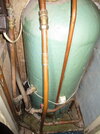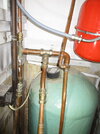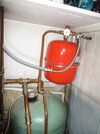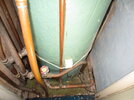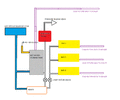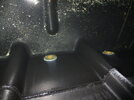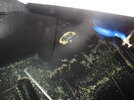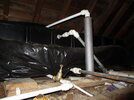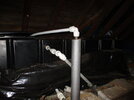Here we go:
IMG_8349 is a photo of the front of the plastic loft water tank (coffin), showing three of the four connections to it. The Uppermost inverted L shaped PVC pipe lagged on its vertical section, is the cold water mains feed. This enters the tank through its left square top hatch. The ball valve is attached to the end of this pipe. The next pvc pipe down, is the tank overflow pipe. Of the two lowermost pipes, the left one goes to what was the garage and is now in the (slow) process of being converted into a workshop. The one on the right is the one which goes down into the Airing Cupboard to feed the EV.
IMG_8354 is a shot of the inside front of the coffin tank, through the water. The upper part of the photo is the base of the tank. The lower part of the photo is the inside of the front wall of the tank. The outlet on the left goes to the garage, the one on the right goes to the Airing Cupboard.
IMG_8355 is a shot of the inside back wall of the tank. The single outlet seen, feeds cold water to the bathroom & WC.
IMG_8361 is there to show as much as I could capture in a photo of the outside of the coffin tank.
So, yes, the airing cupboard IS fed from the loft tank and not from the mains.


